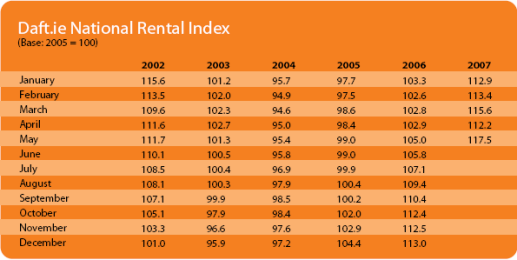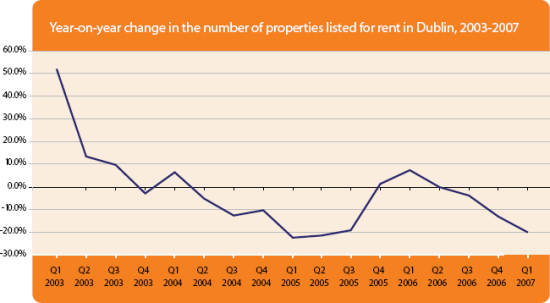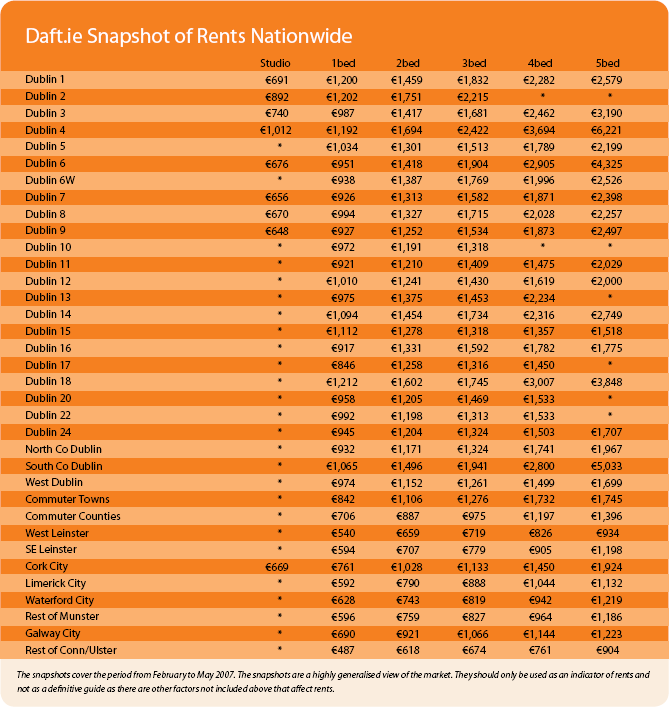Surging rental market to increase investor confidence
Daft Reports
- Ronan Lyons (House Price, Q1 2024)
- Ronan Lyons (Rental Price, Q4 2023)
- Ronan Lyons (House Price, Q4 2023)
- Ronan Lyons (Rental Price, Q3 2023)
- Ronan Lyons (House Price, Q3 2023)
- Ronan Lyons (Rental Price, Q2 2023)
- Ronan Lyons (House Price, Q2 2023)
- Ronan Lyons (Rental Price, Q1 2023)
- Ronan Lyons (House Price, Q1 2023)
- Ronan Lyons (Rental Price, Q4 2022)
- Ronan Lyons (House Price, Q4 2022)
- Ronan Lyons (Rental Price, Q3 2022)
- Ronan Lyons (House Price, Q3 2022)
- Ronan Lyons (Rental Price, Q2 2022)
- Ronan Lyons (House Price, Q2 2022)
- Ronan Lyons (Rental Price, Q1 2022)
- Ronan Lyons (House Price, Q1 2022)
- Ronan Lyons (Rental, Q4 2021)
- Ronan Lyons (House Price, Q4 2021)
- Ronan Lyons (Rental, Q3 2021)
- Ronan Lyons (House Price, Q3 2021)
- Ronan Lyons (Rental, Q2 2021)
- Ronan Lyons (House Price, Q2 2021)
- Ronan Lyons (Rental, Q1 2021)
- Ronan Lyons (House Price, Q1 2021)
- Ronan Lyons (Rental, Q4 2020)
- Ronan Lyons (House Price, Q4 2020)
- Ronan Lyons (Wealth, H2 2020)
- Ronan Lyons (Rental, Q3 2020)
- Ronan Lyons (House Price, Q3 2020)
- Ronan Lyons (Housing, July 2020)
- Ronan Lyons (Housing, June 2020)
- Ronan Lyons (Housing, May 2020)
- Ronan Lyons (Rental, Q1 2020)
- Ronan Lyons (House Price, Q1 2020)
- Ronan Lyons (Rental, Q4 2019)
- Ronan Lyons (House Price, Q4 2019)
- Ronan Lyons (Wealth, H2 2019)
- Ronan Lyons (Rental, Q3 2019)
- Ronan Lyons (House Price, Q3 2019)
- Pierre Yimbog (Rental, Q2 2019)
- Ronan Lyons (House Price, Q2 2019)
- Ronan Lyons (Wealth, H1 2019)
- Ronan Lyons (Rental, Q1 2019)
- Ronan Lyons (House Price, Q1 2019)
- Ronan Lyons (Rental, Q4 2018)
- Ronan Lyons (House Price, Q4 2018)
- Ronan Lyons (Wealth, H2 2018)
- Ronan Lyons (Rental, Q3 2018)
- Ronan Lyons (House Price, Q3 2018)
- Shane De Rís (Rental, Q2 2018)
- Ronan Lyons (House Price, Q2 2018)
- Ronan Lyons (Wealth, 2018)
- Ronan Lyons (Rental, Q1 2018)
- Ronan Lyons (House Price, Q1 2018)
- Ronan Lyons (Rental, Q4 2017)
- Ronan Lyons (House Price, Q4 2017)
- Ronan Lyons (Rental, Q3 2017)
- Ronan Lyons (House Price, Q3 2017)
- Katie Ascough (Rental, Q2 2017)
- Ronan Lyons (Wealth, 2017)
- Ronan Lyons (House Price, Q2 2017)
- Ronan Lyons (Rental, Q1 2017)
- Ronan Lyons (House Price, Q1 2017)
- Ronan Lyons (Rental, Q4 2016)
- Ronan Lyons (House Price, Q4 2016)
- Ronan Lyons (Rental, Q3 2016)
- Ronan Lyons (House Price, Q3 2016)
- Ronan Lyons (School Report, 2016)
- Conor Viscardi (Rental, Q2 2016)
- Ronan Lyons (Rail Report, 2016)
- Ronan Lyons (House Price, Q2 2016)
- Ronan Lyons (Rental, Q1 2016)
- Ronan Lyons (House Price, Q1 2016)
- Ronan Lyons (Rental, Q4 2015)
- Ronan Lyons (House Price, Q4 2015)
- Ronan Lyons (Rental, Q3 2015)
- Ronan Lyons (House Price, Q3 2015)
- Marcus O'Halloran (Rental, Q2 2015)
- Ronan Lyons (House Price, Q2 2015)
- Ronan Lyons (Rental, Q1 2015)
- Ronan Lyons (House Price, Q1 2015)
- Ronan Lyons (Rental, Q4 2014)
- Ronan Lyons (House Price, Q4 2014)
- Ronan Lyons (Rental, Q3 2014)
- Ronan Lyons (House Price, Q3 2014)
- Domhnall McGlacken-Byrne (Rental, Q2 2014)
- Ronan Lyons (House Price, Q2 2014)
- Ronan Lyons (Rental, Q1 2014)
- Ronan Lyons (House Price, Q1 2014)
- Ronan Lyons (Rental, Q4 2013)
- Ronan Lyons (House Price, Q4 2013)
- Ronan Lyons (Rental, Q3 2013)
- Ronan Lyons (House Price, Q3 2013)
- Ronan Lyons (Rental, Q2 2013)
- Ronan Lyons (House Price, Q2 2013)
- Ronan Lyons (Rental, Q1 2013)
- Ronan Lyons (House Price, Q1 2013)
- Ronan Lyons (Rental, Q4 2012)
- Ronan Lyons (House Price, Q4 2012)
- Lorcan Sirr (Rental, Q3 2012)
- Padraic Kenna (House Price, Q3 2012)
- John Logue (Rental, Q2 2012)
- Ronan Lyons (House Price, Q2 2012)
- Barry O'Leary (Rental, Q1 2012)
- Seamus Coffey (House Price, Q1 2012)
- Joan Burton (Rental, Q4 2011)
- Ronan Lyons (House Price, Q4 2011)
- Philip O'Sullivan (Rental, Q3 2011)
- Sheila O'Flanagan (House Price, Q3 2011)
- Rachel Breslin (Rental, Q2 2011)
- Constantin Gurdgiev (House Price, Q2 2011)
- Cormac Lucey (Rental, Q1 2011)
- Eoin Fahy (House Price, Q1 2011)
- Lorcan Roche Kelly (Rental, Q4 2010)
- Ronan Lyons (House Price, Q4 2010)
- John Fitzgerald (Rental, Q3 2010)
- Patrick Koucheravy (House Price, Q3 2010)
- Gary Redmond (Rental, Q2 2010)
- Jim Power (House Price, Q2 2010)
- Jill Kerby (Rental, Q1 2010)
- Brian Lucey (House Price, Q1 2010)
- Michael Taft (Rental, Q4 2009)
- Alan McQuaid (House Price, Q4 2009)
- Dr. Charles J. Larkin (Rental, Q3 2009)
- Emer O'Siochru (House Price, Q3 2009)
- Ronan Lyons (Rental, Q2 2009)
- Oliver Gilvarry (House Price, Q2 2009)
- Brian Devine (Rental, Q1 2009)
- Dr. Liam Delaney (House Price, Q1 2009)
- Gerard O'Neill (Rental, Q4 2008)
- Ronan Lyons (House Price, Q4 2008)
- Dr. Stephen Kinsella (Rental, Q3 2008)
- Moore McDowell (House Price, Q3 2008)
- Shane Kelly (Rental, Q2 2008)
- Fergal O'Brien (House Price, Q2 2008)
- Eoin O'Sullivan (Rental, Q1 2008)
- Dermot O'Leary (House Price, Q1 2008)
- Dan O'Brien (Rental, Q4 2007)
- Frances Ruane (House Price, Q4 2007)
- John McCartney (Rental, Q3 2007)
- Ronnie O'Toole (House Price, Q3 2007)
- Ronan Lyons (Rental, Q2 2007)
- Constantin Gurdgiev (House Price, Q2 2007)
- Fintan McNamara (Rental, Q1 2007)
- Rossa White (House Price, Q1 2007)
- Geoff Tucker (Rental, Q4 2006)
- Damien Kiberd (House Price, Q4 2006)
- Pat McArdle (House Price, Q3 2006)
- Marc Coleman (House Price, Q2 2006)
- David Duffy (House Price, Q1 2006)
- Austin Hughes (House Price, Q4 2005)
- David McWilliams (House Price, Q2 2005)

13th Jun 2007
Fintan McNamara is our guest blogger, commenting on the latest Daft research on the Irish property market.
The latest Daft Rental Report for June 2007 shows that year-on-year rent inflation is now at 11.9% - the highest growth since the Daft.ie Rental Index started in January 2002, and a sign that buyers may have new reasons to invest in Irish property.
It marks a total change in mood in the rental market compared to the 2001-2004 period, when rents fell by up to 20%. Falls at the time were partly due to the introduction of various section type reliefs, such as the expansion of Section 50 relief for student accommodation and the introduction of the Rent a Room scheme, as well as the prevailing low interest rates.
In urban areas and college towns, the findings from this report tally with the recommendation from the Union of Students in Ireland (USI) that students requiring accommodation from September should secure their accommodation at least three months ahead of the academic year. The Report from Daft.ie clearly indicates that sourcing quality rental accommodation is becoming as much a problem as was the case in the late 1990s.
The surge in the last two and half years is in no small way due to strong demand arising from significantly increased immigration following EU expansion. Estimates vary but this could be as much as 150,000, many of whom are seeking rented accommodation. Furthermore, the eight increases in interest rates since December 2005 have undoubtedly contributed to higher rents.
It is noticeable from the Report that there is a significant drop of 1300 in the number of rental units advertised on Daft.ie this year in comparison with last year. This indicates that many tenants may be staying put in their accommodation. It may also be that tenants are availing of increased rights in the form of part four, or four yearly cyclical tenancies, introduced in the Residential Tenancies Act 2004 (RTA 2004) in increasing numbers.
The average rent nationwide now stands at just under €1,400 - almost €300 more than for the equivalent figure in May 2004. This is a major jump and equates to an increase for the period of 27%. The Report shows rents have increased in Dublin by on average 12% during the past year, with the increase in Limerick and Cork even higher at 14%.
Dublin 2 remains the most expensive location for renting a two-bedroom property (€1,751 on average) with Dublin 4 (€1,694) and Dublin 18 (€1,602) also above the €1,600 mark. A two-bedroom apartment in Cork city costs on average €1,028, compared to €921 in Galway, €790 in Limerick and €743 in Waterford.
West and North County Dublin remain the most affordable locations in Dublin for a two or three-bedroom property, based on a typical joint application and mortgage interest relief.
For a two-bedroom property, where one double-room is let out, the typical net mortgage burden in these areas is just €861 (North Co. Dublin) and €824 (West Co. Dublin) - all other areas in Dublin typically cost more than €1,000. Put another way, with post interest relief post rent-a-room income payments of just over €1,000, it's cheaper to buy a 3-bedroom property in West Co. Dublin and let a double-room than it is to buy a 2-bedroom property and rent out a room anywhere else in Dublin apart from North Co. Dublin.
For investors, expected yields generally remain below 4% but have risen in recent months. Average yields are highest for two-bedroom properties (3.55%) and lowest for five-bedroom properties (2.71%). Regionally, the highest expected yields are to be found in Dublin City Centre (3.97%) and West County Dublin (3.88%). Outside Dublin, average yields remain highest in Limerick City (3.79%), followed by Cork City (3.52%).
The consensus among many economists is that house price inflation has been of the order of 300% over the last decade. The Government's intervention in the property market in April 1998 failed to check house price inflation but caused rents to rocket, which in turn led to calls for rent control. A housing commission was set up to increase security of tenure for tenants and within three years the government gradually reversed all the measures set out in 1998, but retained the penal stamp duty rates. Interestingly, although some 2700 disputes have been lodged with the Private Residential Tenancies Board set up under the RTA 2004, disputes in relation to market rent have hardly featured at all.
What is remarkable is that prior to 1998 - when the government took action on spiralling house prices - it was widely believed that rents were tracking runaway house prices. Now, rents have increased significantly while the housing market is showing signs of greater stability. However it cannot be too long before houses prices resume their inevitable upward trend. The report by Daft.ie will be good news for those investors interested in buying property to let, as they can expect strong rents for the foreseeable future, in comparison with more recent fixations solely on capital appreciation.
HIGHLIGHTS:
 The Daft.ie National Rent Index |
 Irish Rental Market Falling Supply 2003-2007 |
AVERAGE RENTS SNAPSHOT:
 Average Rents across Ireland in June 2007 |
